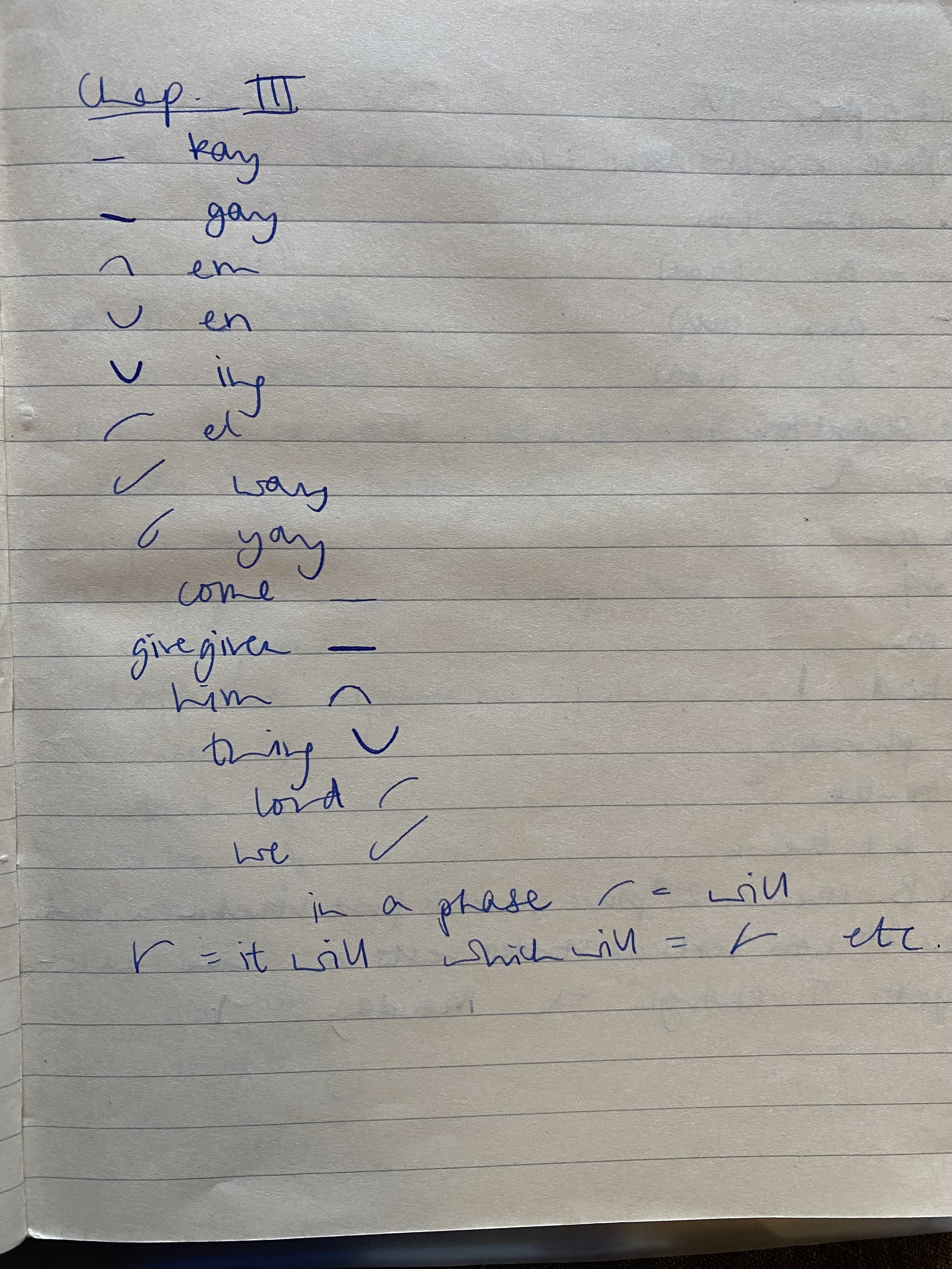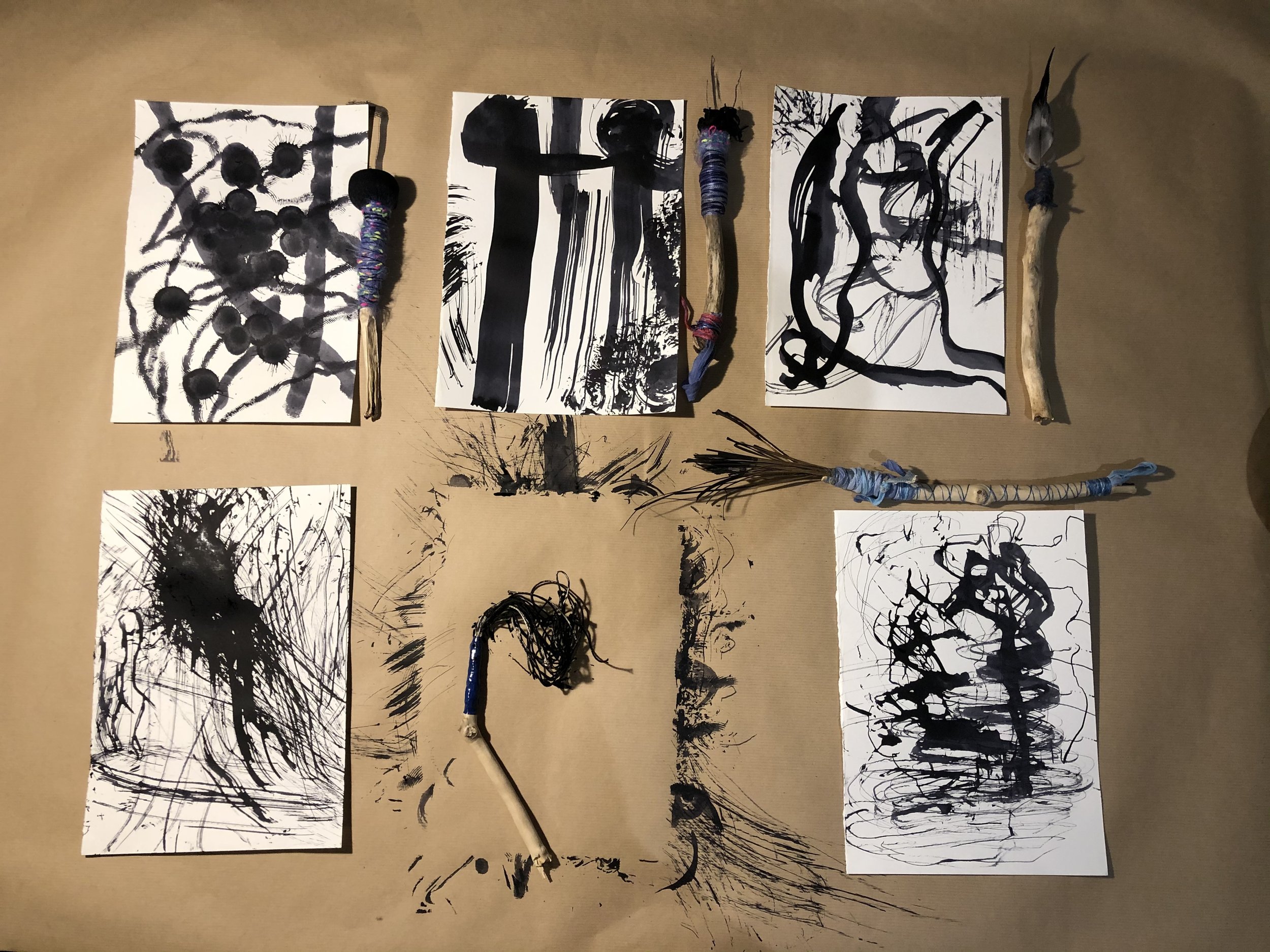Hand writing, signatures & mark making
Hand writing is an essential skill to develop as it allows us to communicate in a way that other people can recognise, interpret and understand. More so, for artists, it allows us to evidence authorship through a distinct and unique set of marks - it is the proof left behind that reveals or provides insight into the artist’s role in creating the art.
Having a signature is commonplace today for signing documents or receipts etc. however, the first recorded signature of a famous historical figure is attributed to El Cid, a medieval Spanish nobleman and military commander, in 1069.
Fortunately my signature is fairly legible, which is weird considering that my handwriting isn’t. Also, as it seems to me, a lot of people’s signature are completely unreadable.
I think I possibly first established a type of signature when I had my first cheque book around the age of 16/17. I recently found my Passport from 1968 which had me and my 3 younger siblings on it, maybe a reason why I feel a need to ‘mother, protect’ them all - my signature then was simply F.A. Fisher.
My Passport from 1968
‘F. A. Fisher’
The Marketing Company who did the PR for FRAN WHITE WOVEN TEXTILES asked me to hand-write my name, Fran White, for use on my brochures, catalogues and parcel tape.
I recall practising doing this over several sheets of A4 paper until I was happy with the result.
'Fran White Woven Textiles'
In the spirit of making, and looking at, marks we were asked to write our signature repeatedly in an art class a few years ago.
Writing sometimes shows up in my art, collaged cutout letters glued to my paintings - occasionally writing by hand directly onto the canvas. Recently a tutor, Simon Carter, referred to the calligraphic shapes and graffiti marks on my paintings some of which made him think of cave paintings and the work of Scottish Artist Alan Davie. Jan Dudley, interviewed Tracey Emin about her new White Cube Show for the Financial Times - ‘Middle Eastern motifs recur in her vivid new paintings’ - these can be traced back to her heritage. I know my paternal grandfather spoke/wrote in Sanskrit. Coincidentally for several years I studied this language - nothing to do with my heritage but maybe traceable in the motifs I use!
For almost a year I have been following a daily ‘slow-stitching’ practise, making stitches/marks on my own eco-dyed linen fabric using linen thread. I use a 20 minute timer and stop when the alarm goes. For the first 6 months these were purely intuitive both in the selection of the colour of the threads and the stitches I used. When stuck I referred to various sketches I had made which were on the wall, recreating these in stitch. Early in the summer I recognised that I was simultaneously sketching and stitching. My reference had become the walnut tree studies I had made while staying with my daughter in France. In another departure I started using random other yarns which I had collected over the years as they were relevant to my work. The stitches on one particular piece allude to marks made by Molly on cardboard which I had then torn up and collaged.
Mark making
Mark making describes the different lines, dots/dashes, pen/brush marks, patterns, and textures etc. we create in an artwork to tell a story. These can be tight and controlled/deliberate or loose and flowing.
I recently rediscovered my shorthand exercise books and this reminded me of my early experience of making marks to record thoughts, experiences and information - Each mark an abbreviated symbol to quickly record words for later interpretation. The process of writing in shorthand is called stenography, from the Greek stenos (narrow) and graphein (to write) and can appear pictorial when laid out across the page.
A page from my short hand exercise book
Over the past 11 years I have loved mark making with my grandchildren, firstly Jack & Sam and now Molly, encouraging them to play, be loose and as un-proscriptive as possible.
As part of the Forecast exhibition which I recently supported as joint curator in the Gallery at Bannatyne Hotel and Spa, Hastings, I helped deliver a work shop with two friends where we guided people in making their own "brushes" and using these to create distinctive marks on paper. I have a collection of hand made brushes myself that I enjoy experimenting with and making unexpected marks.
My hand made brushes and some mark making experiments.
The hand of the artist
The hand of the artist is something often referred to in artistic circles and comments are made such as 'it has got Fran’s handwriting all over it', which is reassuring and I find grounding, in a similar way to re reading the old letters to/from my parents. In an article about Nigel Slater’s new book ‘A Thousand Feasts: Small Moments of Joy… A Memoir of Sorts’ , he is quoted as saying he ‘tends to use certain tea towels when drying up…..it is grounding if you are feeling anxious’. I can relate to this notion.
Recognising marks made by others:
When I first became interested in following the artistic path I was like a sponge learning about different artists both contemporary and older. On the way it was exciting to start recognising different marks of individual artists as well as styles. When a water-colour tutor asked me to name a favourite artist I immediately answered Ravilious - we then carefully studied his work identifying various techniques such as scraping into the paper to texturise his marks. In fact I was surprised on close inspection at the variety of marks made with water-colour as opposed to acrylic or oils.
Does the mark make the man/woman?
When I was first introduced to the artist Prunella Clough, another favourite, I found I was often able to recognise her work/oeuvre over many decades even though she became more and more abstract. An exhibition held about her at Tate Britain was encouraging as it felt like I often worked in a similar way, using sketchbooks and photographs. Along the way I have emulated her style of working.
Looking through my own artwork made over the past 20 years I am surprised and relieved to realise there is often a common thread - even if at times it is rather tenuous.
Some calligraphic marks in my most recent artwork.










